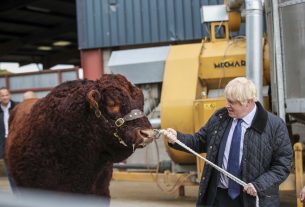A panel of scientific experts advising the U.S. Food and Drug Administration (FDA) has unanimously recommended a flexible approach for this year’s COVID-19 vaccines. This allows the agency to retain the current vaccine composition or update it to better match the variants currently in circulation.
Concerns Over New Vaccine Approval Framework
During the advisory meeting, several members questioned how the FDA’s newly introduced approval framework might affect the timeline for rolling out updated vaccines. One of the first to raise concerns was Captain Sarah Meyer from the U.S. Centers for Disease Control and Prevention (CDC), who asked whether selecting a new strain would require additional clinical trials.
Dr. Jerry Weir from the FDA responded that while the question was important, the committee’s immediate focus was determining which viral strain to recommend. He noted that broader regulatory issues would be handled separately.
New Approval Rules and Access Challenges
Under the revised FDA guidelines, vaccines for high-risk individuals—those over 65 or with underlying health issues—can continue using data similar to what’s been used for flu shots. However, for healthy adults and children, the agency now requires placebo-controlled trials to approve any changes to the COVID-19 vaccine formula.
This shift raised concerns among committee members, who worried that the new requirements could delay the availability of vaccines for the general population, especially if manufacturers are forced to conduct lengthy studies.
Dr. Stanley Perlman of the University of Iowa asked whether choosing a new strain could create regulatory hurdles that would slow down distribution. In response, Dr. David Kaslow of the FDA emphasized that the goal was not to disrupt vaccine access and that timelines would be prioritized.
Focus on JN.1 Variant and Its Descendants
After reviewing current data, the committee agreed that the next generation of vaccines should target the JN.1 family of viruses. This group, which includes variants like KP.2, replaced earlier strains and remains the root of most currently circulating versions.
Although specific variants like JN.1 and KP.2 are no longer dominant, their descendants are still responsible for significant transmission. Studies presented by manufacturers indicated that vaccines based on these older strains still boost immunity effectively.
Push for Updates to Match Current Dominant Strains
Despite the effectiveness of existing formulations, some committee members advocated for an update. A new variant called LP.8.1—an offshoot of the JN.1 family and currently the most widespread strain in the U.S.—was suggested as a potential focus.
Dr. Hayley Gans from Stanford supported updating the vaccine to include LP.8.1, emphasizing the need to stay ahead of viral evolution. Dr. Eric Rubin of Harvard agreed, stating that even small differences matter when planning for future outbreaks.
Next Steps and Fall Vaccine Rollout
The FDA is expected to finalize its decision on the vaccine composition for the 2025–26 season soon. The goal is to give manufacturers ample time to produce and distribute updated doses in advance of the fall vaccination campaign.
By providing flexibility in their recommendation, the advisory panel has helped position the FDA to respond more effectively to an evolving virus while aiming to maintain timely access for all eligible populations.




